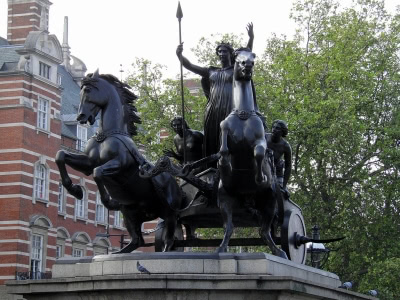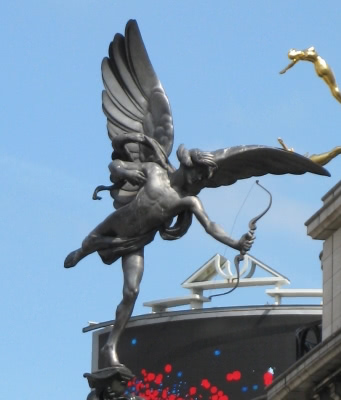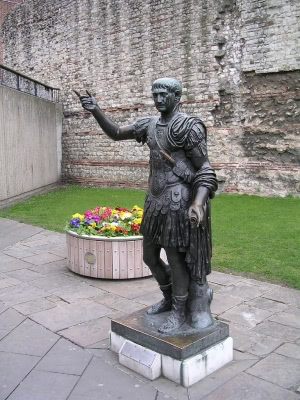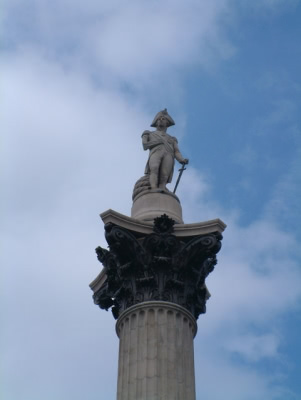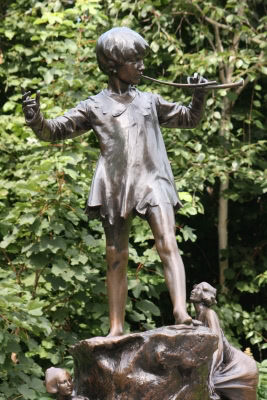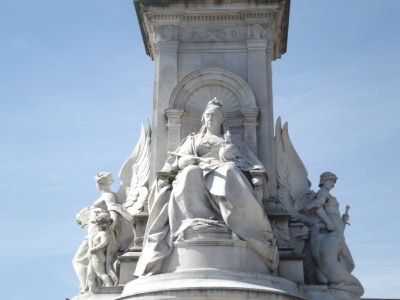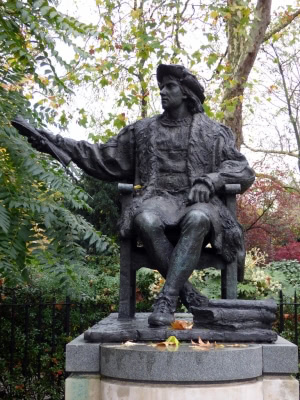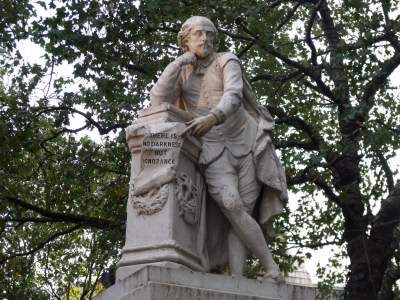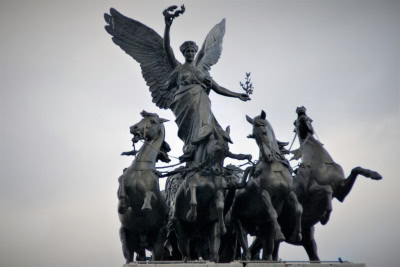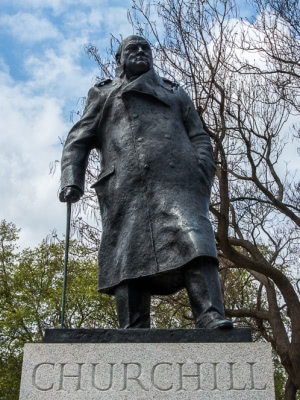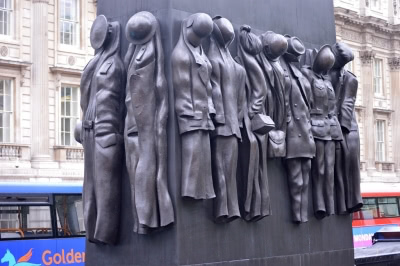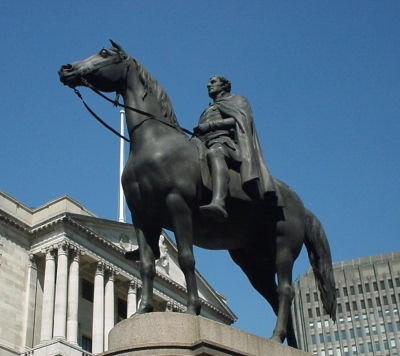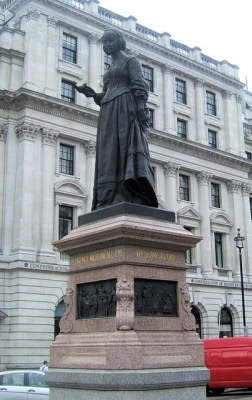23 Must-see Statues In London
Date post added: 25th July 2022
The grandest statue in London to the oldest. Famous London statues to those that are lesser-known – but just as intriguing. Statues of real people and those that commemorate fictional characters. Here is our round-up of the 23 must-see statues in London.
1. Boudicca
No other London statue is as iconic – and tragic – as that of Boudicca. Standing at the Houses of Parliament end of Westminster Bridge, the bronze sculpture was created in the Victorian era and depicts the queen of the Celtic Iceni people poised for battle with the Romans. Boudicca’s husband, Prasutagus, left half of his all to the Romans when he died. That wasn’t good enough for the Romans. They scorned his generosity, seized the lot, raped his daughters, logged Boudicca. Big mistake. Boudicca rallied her people, sacked and burned the Roman settlements of Colchester, St Albans and London, massacred the inhabitants. You have to drill down about 20 feet to get to the beginning of London – to Londinium, Roman London. Just before you get to those earliest beginnings you hit a layer of red and black ash. That’s what Boudicca did to London, that’s her calling card.
2. Queen Anne

“Queen Anne” by It’s No Game
You’ll find the statue of Queen Anne in front of St Paul’s Cathedral. Interestingly though, this isn’t the original statue as the first was defaced by rogues mocking the Queen’s love of brandy – and the statue’s proximity to the local gin shop!
3. Alfred the Great
King Alfred is noted in British history as the only English king to be called ‘the Great’. Why? As King of Wessex, Alfred battled with the Danes intent on taking over Britain, attempting peace, clawing back land when peace proved impossible, and negotiating Danelaw. This treaty divided England yet also paved the way for a unified Anglo-Saxon culture. See Alfred the Great’s statue at Trinity Church Square in Southwark.
4. The Shaftesbury Memorial Fountain
Mistakenly called the Eros statue, the Shaftesbury Memorial Fountain at Piccadilly Circus is actually a monument to Anthony Ashley Cooper, the 7th Earl of Shaftesbury. Known as a passionate social and industrial reformer, the Earl’s Mines Act prevented all women and girls, and all boys under the age of 10, from coal mine employment. The Earl also served as president of the Ragged Schools Union for over 39 years. Rather than depicting the Earl himself, the statue is of Eros’s sibling Anteros- the God of selfless love.
5. Emperor Trajan
The bronze statue of the 13th Emperor of the Roman Empire can be found at Tower Hill in London, in front of a wall built by the Romans. Even though Trajan never visited London, he led military campaigns that vastly expanded the Roman Empire. For this, and the stability and growth he brought on home soil, Trajan was awarded the moniker of Optimus Princeps – best ruler.
6. Admiral Horatio Nelson
Believed to be the greatest Naval commander in the United Kingdom’s history, the statue of Admiral Nelson can be found on the south side of Trafalgar Square, close to the National Gallery. Nelson’s column was built to honour the Admiral’s death at the Battle of Trafalgar during the Napoleonic war.
7. Peter Pan
Appearing in Kensington Gardens overnight, the Peter Pan statue was a gift to the City of London from J.M Barrie, the author of the beloved Peter Pan books. Make sure to get up close to see all of the magical details!
8. The Queen Victoria Memorial
Perhaps one of the grandest of London’s statues is the Queen Victoria Memorial, which has pride of place in front of Buckingham Palace in St James Park. 25 metres high and containing 2300 tonnes of white marble. The statue features a sculpture of Queen Victoria herself, alongside figures representing truth, charity, justice, motherhood, constancy, victory and courage. The Albert Memorial, dedicated to Queen Victoria’s husband, resides in Kensington Gardens.
9. Richard the Lionheart
Victoriously sitting astride his horse, the equestrian statue of Richard the Lionheart can be found in Old Palace Yard in front of the Houses of Parliament. Despite Richard I’s popularity in British history, the King spent little time in the country and said: “I would have sold London if I could have found a buyer” when trying to raise funds for the third crusade. The rear of the plinth shows the scars of shrapnel damage from a World War II bombing raid, and his sword was damaged. It inspired the line ‘Nazi tyranny can bend the sword of democracy but it can’t break it’.
10. Christopher Columbus
Famous for his discovery of the Americas, the statue of explorer Christopher Columbus can be found in Belgrave Square, southwest of Hyde Park Corner. Columbus said: “Following the light of the sun we left the old world,” with the London statue given as a gift from the people of Spain.
11. William Shakespeare
Appropriately situated in Leicester Square Gardens, in London’s West End, the statue to Shakespeare is a tribute to the playwright, poet and actor. The 19th century statue was restored in 2012 and features an inscription from Twelfth Night: ‘There is no darkness but ignorance’. As Shakespeare’s statue is close to the half-price ticket office, you can pick up your theatre tickets at the same time! You can also find a Shakespeare statue in Westminster Abbey and many, of course, in Stratford-upon-Avon.
12. The Angel of Peace
The largest bronze sculpture in London sits atop the Wellington Arch. Intended to be an entrance to Buckingham Palace, the arch features the Angel of Peace on her four horse chariot, or quadriga. 19th century Marble Arch, with its many statues, was also originally designed as an entrance to Buckingham Palace.
13. General James Wolfe
Situated in Greenwich Park, the bronze statue of General James Wolfe was erected in 1930. Greenwich resident Wolfe led the British forces at Quebec against the French, with the statue a gift from the Canadian people to Britain.
14. Queen Elizabeth I
Resplendent on the façade of the church of St-Dunstan-in-the-West in the City of London, sits the statue of Queen Elizabeth I. It was Elizabeth’s half sister Mary that was England’s first Queen Regent, succeeded by Elizabeth who would go on to rule for 45 years. Elizabeth said: “I have the heart of a man, not a woman, and I am not afraid of anything.” The St Dunstan’s statue is the only contemporary statue that exists of the monarch.
15. Captain Thomas Coram
A lesser known London statue is that of Captain Thomas Coram in Brunswick Square in Bloomsbury, Camden. Coram was appalled to see babies and young children left to die on dung heaps and set out on a mission to establish a foundling hospital. The charter was eventually granted by King George II in 1739, 20 years later.
16. Dr Samuel Johnson
“Sir, when a man is tired of London, he is tired of life; for there is in London all that life can afford.” Sir, a man is never tired of that quote – it’s one for the ages. Our recommendation: fortify yourself with a potation at Ye Olde Cheshire Cheese and head off to meet the man who said those words, Dr Samuel Johnson, giant of 18th-century British literature and author of the first great dictionary of the English language. His statue is along Fleet Street (“Why, Sir, Fleet Street has a very animated appearance”), at St Clement Danes church, at the eastern end of the Strand. From Ye Olde Cheshire Cheese thread your way through that delightful little sequence of alleyways past Dr Johnson’s House on your way to Fleet Street.
17. Lord Palmerston

“Statue of Lord Palmerston (Thomas Woolner, 1876) – Parliament Square – Westminster – London” by didaclopez
Adversary of Queen Victoria and British Prime Minister twice over, Henry John Temple, the 3rd Viscount Palmerston was probably the most important political leader of the 19th century. Famous for saying: “It is a narrow policy to suppose that this country or that is to be marked out as the eternal ally or the perpetual enemy of England. We have no eternal allies, and we have no perpetual enemies.” You can see Palmerston’s statue at Parliament Square. It is believed to be the best-dressed statue in London!
18. Winston Churchill
Nobel Prize winner, twice British Prime Minister and one of the most famous figures in British history. The statue of Sir Winston Churchill can be found in Parliament Square. Wearing the same navy greatcoat which Churchill wore when he first set foot on the newly liberated D-Day beaches in Normandy, Churchill’s statue is one of 12 at Parliament Square.
19. The Women of World War II
The war memorial dedicated to the Women of World War II is one of the newer London statues, unveiled in 2005 to mark 60 years since the end of the war. Located in Whitehall, this statue shows not the women themselves but their uniforms. A powerful acknowledgment of the women who made a huge contribution to the war effort, but went largely unseen and unrecognised. Nearby, you will find the 20th-century Cenotaph, designed by Sir Edwin Lutyens and where Remembrance Day celebrations take place.
20. Duke of Wellington
There are three statues of the Duke of Wellington in London. The first, at the Royal Exchange, is testament to the Duke’s efforts at rebuilding London Bridge. The second sits at the Royal Arsenal in Woolwich, after being moved from the Tower of London. And the third resides on Hyde Park Corner, and features the Duke atop his favourite horse, Copenhagen, commemorating Wellington’s defeat of Napoleon.
21. Florence Nightingale
Residing at Waterloo Place, St James’s, the statue of Florence Nightingale – ‘the lady of the lamp’ – reflects Nightingale’s efforts during the Crimean war and her contribution generally to the reformation of 19th-century healthcare practices.
22. King Charles I
London’s oldest bronze statue is the equestrian statue of King Charles I in Charing Cross, looking down toward Parliament from Trafalgar Square. A passionate collector of artworks from masters including Leonardo da Vinci, Raphael and Titian, the works were sold following Charles’ execution after the Civil War. Charles I is well represented in central London. There’s a bust of him where he was executed – just down Whitehall, at the Banqueting House. And another one is affixed to the east wall of St Margaret’s Church in Westminster. Over the way, in front of Westminster Hall, is the statue of Oliver Cromwell, who had Charles I beheaded. They’re eyeing each other warily. Though some say Cromwell is hanging his head in shame at his act of regicide.
23. Diana, Princess of Wales
One of London’s most poignant statues is surely that of Diana, Princess of Wales, within the Sunken Garden at Kensington Palace. Depicting Diana surrounded by three children to represent Diana’s work for humanitarian causes, the statue was unveiled in 2021 on what would have been the 60th birthday of “the people’s princess.”

